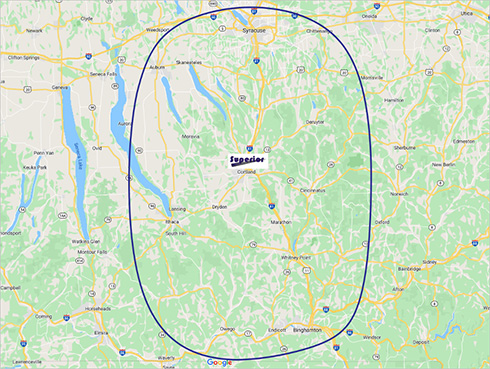Identifying seepages, in a timely manner, is critical to preventing further water damage. The main objective is to pinpoint the source. Where is the water coming from? Is it an external water source such as rain or groundwater, or another source such as leaky plumbing or condensation? To find the source and determine the best way to repair it, carefully inspect your basement for signs of leakage. Common indications include:
- Dampness/Brown Stains on Walls and Ceiling – If your walls or ceiling feel/look damp and have the appearance of brown stains, this may be a sign that water has been absorbed into them. This water could be coming from leaky plumbing, groundwater seepage or rainfall buildup.
- Unpleasant Odors – Mold and mildew are common home invaders that appear quickly, within 24 hours, in areas of high humidity or, where water has accumulated. If a musty smell is present, you’ve found your perpetrators. Acting quickly to mold and mildew is important as it releases harmful bacteria that can produce respiratory problems and allergies.
- Wood and upholstered furniture can trap mold, may need to be discarded.
- Glass, plastic, metal objects, and other items made of hardened or nonporous materials can often be cleaned, disinfected and reused.
- Carpeting is a big issue because simply drying it out does not eliminate mold spores.
- Efflorescence – This chalky, white mineral deposit that’s often seen on walls is a sign of high humidity levels and ongoing water penetration.
- Stained Carpets – Carpet that has stains or is damp can indicate water has been entering. Find all areas where this may be happening and see if it is linked with heavy rainfalls.
- Water Bugs – Some small insects are drawn to areas where moisture gathers and will be on the hunt for water sources. Signs of bugs can be found behind furniture and appliances, around corners, and along baseboards and beams to get closer to the water source.
- Stained or Damaged Wood – Darkened wood or tarnished floorboards are major indicators of water damage.
- Cracked and Damp Floors – Cracks around the floors or walls can be a sign of water trying to enter and seep through.
- Peeling Paint – Once water has soaked through drywall, the paint will begin chipping away. If this happens are you aren’t feeling any moisture, a stagnant water problem may be present.

